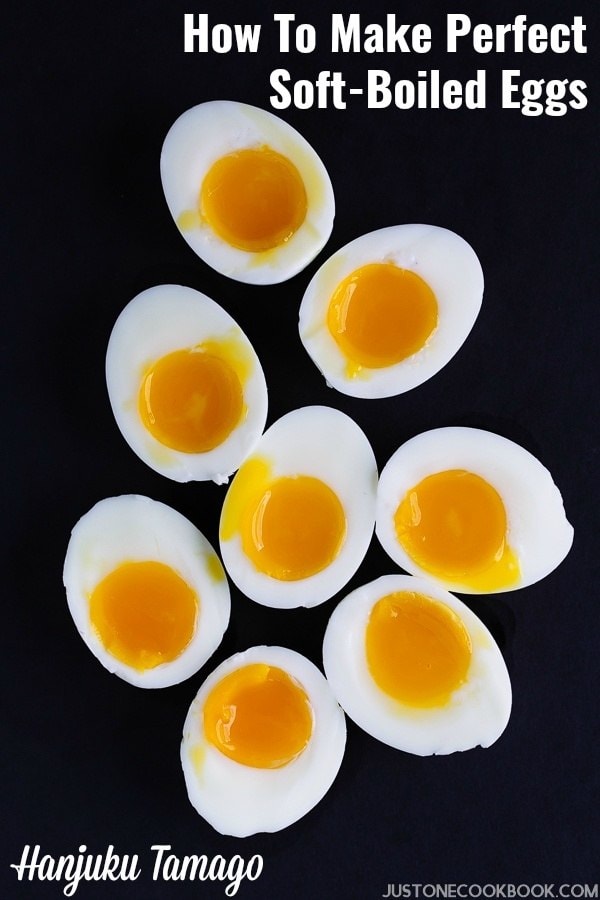
Boiling eggs may seem like the simplest kitchen task one can accomplish in the blink of an eye, but most of us know it is much trickier than that. If you have never made soft-boiled eggs because it seems more intimidating than making hard-boiled eggs, then I hope this step-by-step recipe will encourage you to give it a try!
Hanjuku Tamago for Everyday Meal
Called hanjuku tamago (半熟卵) in Japanese, jammy soft-boiled eggs are delicious on their own but also add a creamy texture and rich flavor to various dishes.
I like to prepare hard-boiled eggs and soft-boiled eggs for Japanese dishes like ramen, udon, and Japanese curry rice. They never fail to make a dish extra special and satisfying.
As you might already know, soft-boiled eggs are the key ingredient in making ramen eggs.
Most importantly, soft-boiled eggs make a fantastic protein to add to your everyday meal—from breakfasts to bentos, snacks, and dinners!
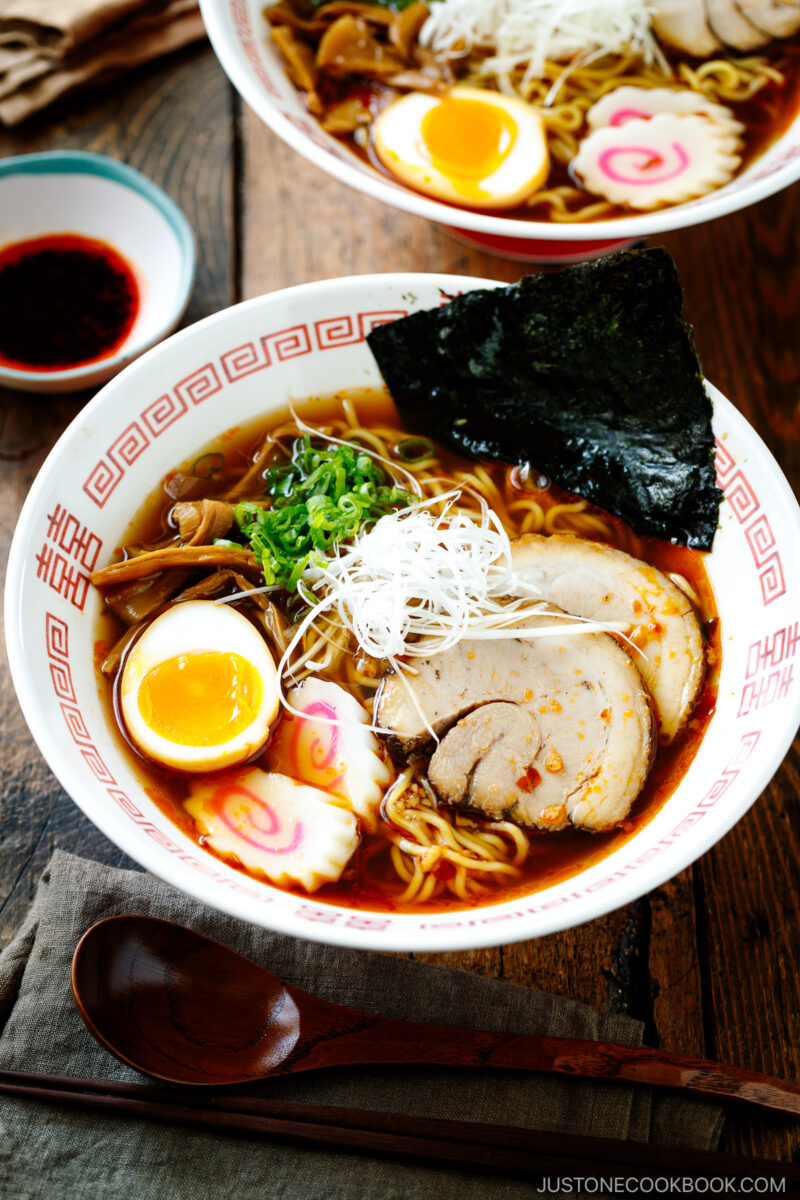
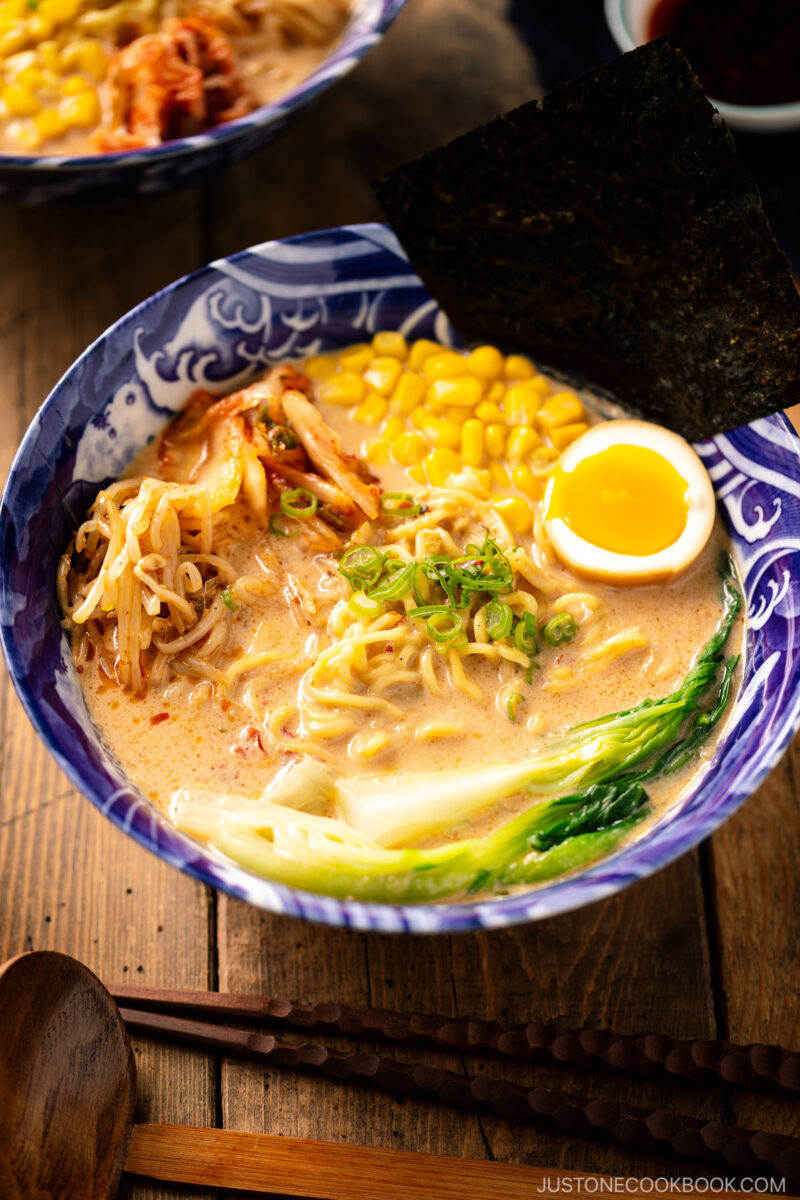
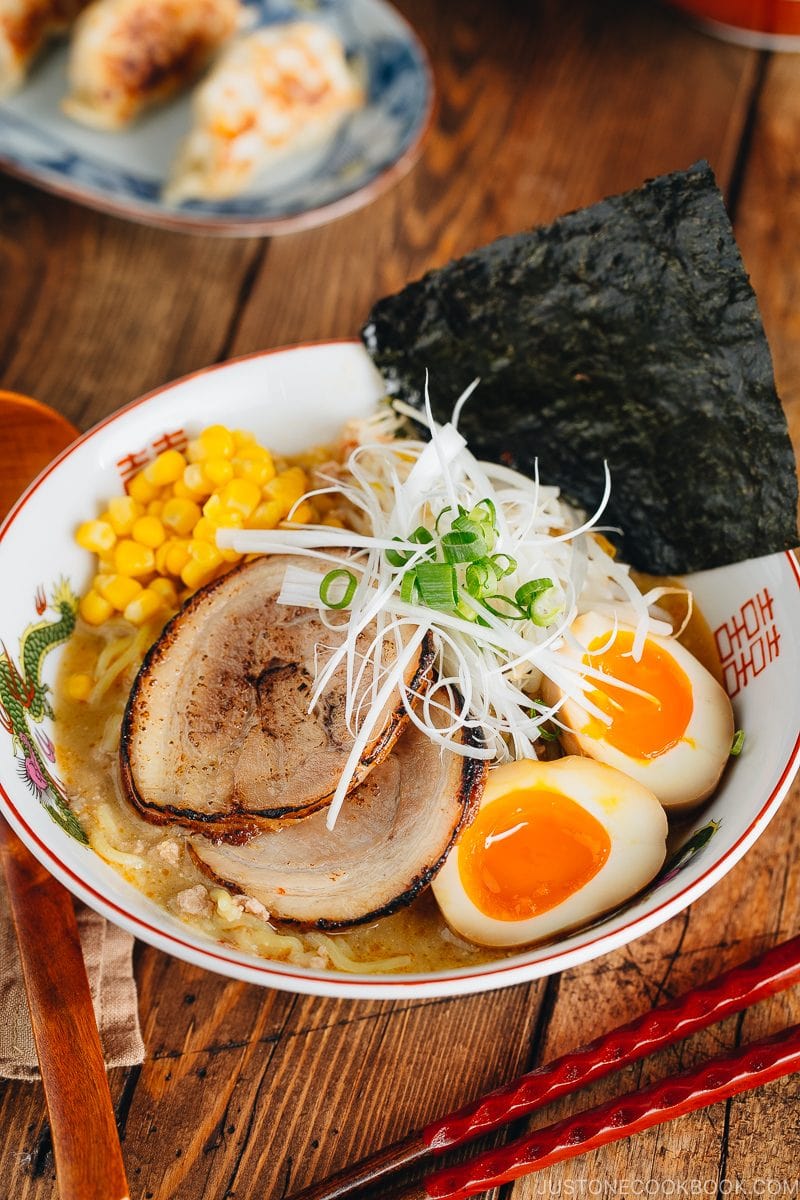
How to Make Perfect Soft-Boiled Eggs
To achieve the right texture for soft-boiled eggs, timing is key. Here’s how you cook soft-boiled eggs:
- Fill your saucepan with enough water so the eggs will be completely submerged. Bring the water to a boil.
- Once it reaches a rolling boil, quickly but gently place the eggs from the fridge into the water, one at a time, before reducing the heat to a simmer.
- Set the timer for 6.5 to 7 minutes.
- When the time is up, stop the cooking process immediately by submerging the eggs in an ice bath for 3 minutes.
- Once the eggs are cooled, peel the shells, and they will be ready to serve. The whites of the soft-boiled eggs should be firm (but not overly hard), and the yolks should be warm and runny.
Important Tips
- Use older eggs (at least one week old) because they are easier to peel. The membrane of fresh eggs adhered more firmly to the shell, which makes them harder to peel.
- Use only cold-from-the-fridge large eggs, and not from room temperature.
- To prevent egg cracking, place the eggs—one at a time—gently into the water. DO NOT DROP them in. Reduce the heat to a rolling simmer after you add all the eggs in.
- Once the eggs are cooked, transfer the eggs to a bowl of ice water so they will stop cooking immediately.
How long to Boil Eggs
I typically boil my eggs for 6.5 minutes, but everyone has their preference on how jammy they want their egg yolks to be. If you prefer a more runny yolk, go with 6 minutes. If you prefer a firmer yolk, then 7-8 minutes would be your guide.
How to Crack Eggs
Tap the egg firmly but gently on a flat surface or the edge of a bowl to create a crack. I always start with the wider end, which contains the air pocket. Use your thumbs to gently pull apart the cracked shell. Rinse in cold water to remove any stubborn bits of shell. Now your egg is ready to use!
More Ways to Enjoy Soft-Boiled Eggs
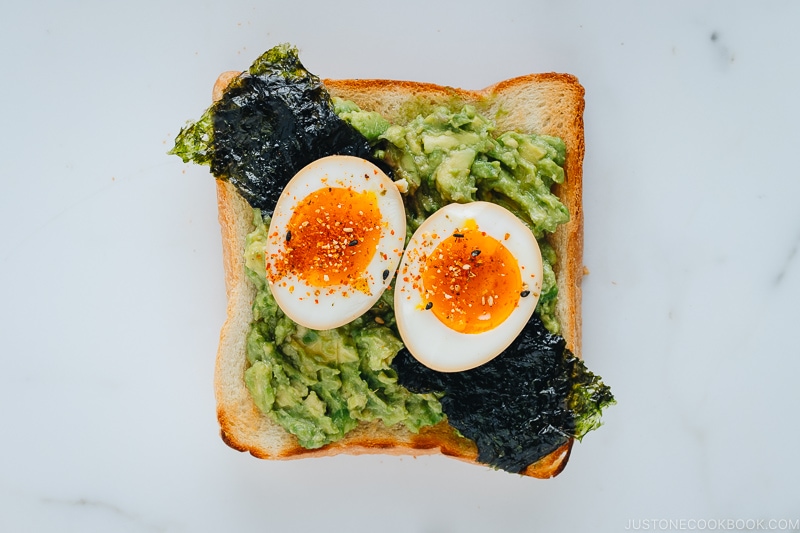
In addition to topping a bowl of ramen, I love to include soft-boiled eggs in my meal prep because they can be enjoyed in so many ways!
- Rice bowls or other grain bowls — Teriyaki Tofu Bowl
- Noodle dishes — Soba Salad, Vegetarian Udon, Tan-Men
- Toasts — Avocado Toast, Buttered Toast
- Salads — Easy Romaine with Sesame Dressing
- As a standalone snack – You can keep it simple by sprinkling salt and pepper. Or make it more fun by using a light sprinkle of furikake (rice seasonings) and shichimi togarashi (Japanese seven spice) before you dig in. A splash of soy sauce is so yum too!
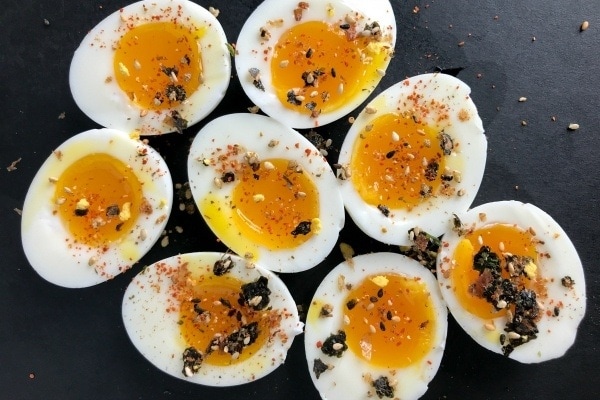
Now that you’ve learned the simple technique of making perfect soft-boiled eggs, I hope you get to enjoy your ramen or rice dishes with this protein-packed companion. Like a molten lava cake with oozing chocolate, nothing is more luxurious than when you slice open the soft-boiled eggs to reveal the golden runny yolk.
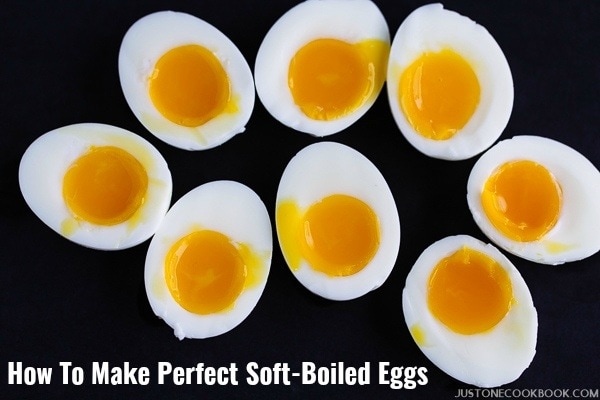
Wish to learn more about Japanese cooking? Sign up for our free newsletter to receive cooking tips & recipe updates! And stay in touch with me on Facebook, Pinterest, YouTube, and Instagram.
How to Make Perfect Soft-Boiled Eggs (Hanjuku Tamago)
Ingredients
- 4 large eggs (50 g each w/o shell) (refrigerated)
- water
- ice cubes (for the iced water)
Instructions
- To a saucepan, add enough water to cover the eggs by 1 inch, 2.5 cm (you will add the eggs later). Bring the water to a rolling boil on medium high heat.
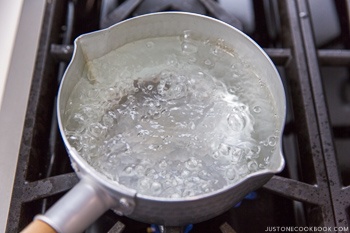
- Once the water is boiling, take out 4 large eggs (50 g each w/o shell) from the refrigerator. Using a slotted spoon, gently put the cold eggs into the boiling water.
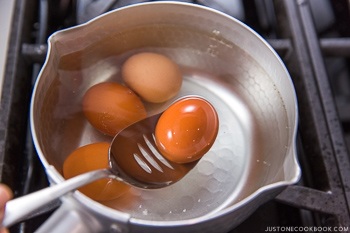
- Reduce the heat to a simmer and cook the eggs for 6½ to 7 minutes (set a timer). To keep the yolks in the center of the boiled eggs, gently rotate the eggs with chopsticks once in a while for the first 3 minutes. Note: The cooking time may vary depending on the size and starting temperature of the eggs. If you prefer runnier yolks, cook for 1 minute less.
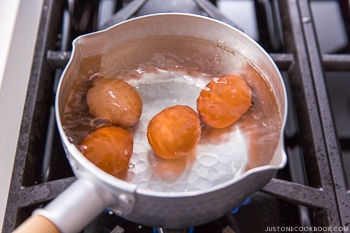
- Prepare a bowl of iced water by adding ice cubes to water. After 6½ or 7 minutes, drain the boiling water and shock the eggs in the iced water for 3 minutes. Gently peel the egg shell. Your Hanjuku Tamago is now ready to enjoy.
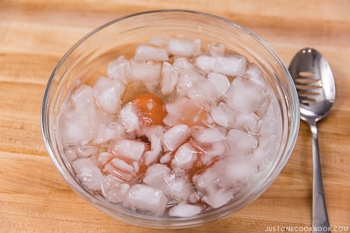
To Serve
- Cut the eggs in half with a sharp knife, cheese cutter, fishing line, or string and serve. You can enjoy them as a snack sprinkled with furikake (rice seasoning) and shichimi togarashi (Japanese seven spice). Tuck them into your bento or add as a topping to your ramen, udon, and Japanese curry rice. You also can use these soft-boiled eggs to make seasoned Ramen Eggs (Ajitsuke Tamago).
To Store
- Store the soft-boiled eggs in an airtight container and refrigerate for up to 3–4 days. Do not freeze as the texture of the eggs will change when frozen.
Notes
Nutrition
Did you make this recipe?
Tag @justonecookbook on Instagram so we can see your delicious creation!


